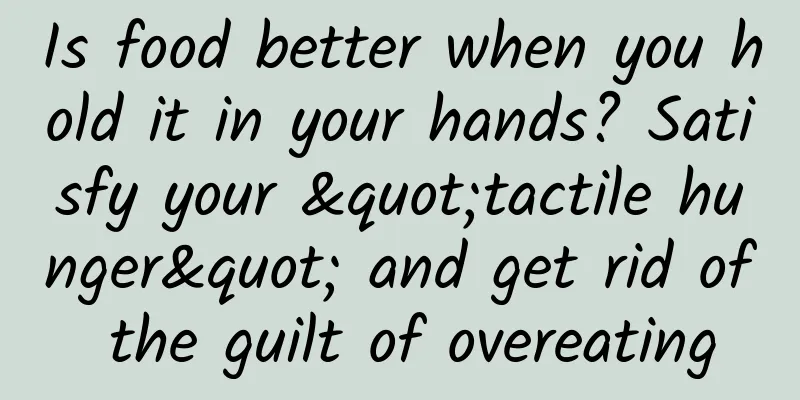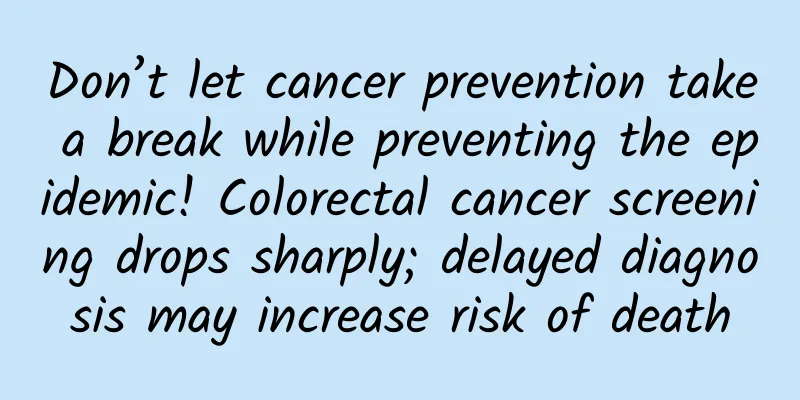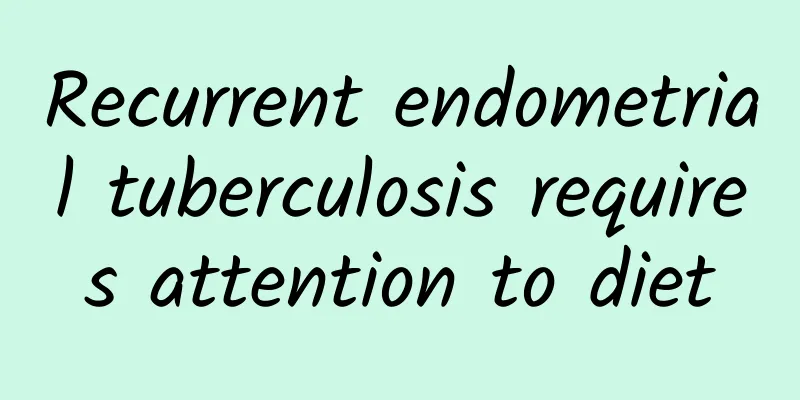Is food better when you hold it in your hands? Satisfy your "tactile hunger" and get rid of the guilt of overeating

|
Hunger is a multisensory experience. Our eyes, nose, mouth, our stomach, cells, our heart and even our will can all convey the so-called "hunger" signal to us. But it's easy to get confused - which part of the body is hungry? Exploring the "Nine Types of Hunger" can help us understand which type of hunger is calling us, and make better decisions about our diet. Here's a case that illustrates the benefits of being familiar with the nine types of hunger. One woman who decided to have weight-loss surgery told me she was glad she had taken a mindful eating course beforehand. After surgery, she joined a support group at the hospital. Some women are frustrated and complain, "I thought this surgery would get rid of my hunger, but I'm still hungry!" My students say that others in the support group don't understand that the hunger in the stomach is reduced by the surgery, but the hunger in the eyes, the hunger in the ears, the hunger in the nose, the hunger in the mouth, and especially the hunger in the heart are all still shouting, "I'm hungry, let's eat!" Hunger of the heart is particularly important. Using food to relieve inner distress can only provide temporary comfort . We must learn to develop emotional intelligence, recognize which emotion triggers the desire to eat, and then deal with that emotion directly. When inner hunger is not acknowledged, people may try to relieve their distress with food, but they will soon find that their inner critic is attacking them for not eating properly. The extra anxiety created by your inner judge can catalyze a vicious cycle: You feel bad, so you eat, and because you eat you feel worse, so you eat more. This cycle repeats itself over and over again. Mindful eating allows us to take a step back and ask: How did I feel before I couldn’t resist the urge to eat? Once we can identify that feeling, we can take a better antidote than compulsive eating. If you feel lonely, just give your dog a call and give him a hug. If you're tired and irritable, take a nap. Or refresh yourself by meditating or going for a walk and breathing in fresh air. I think you’ll enjoy exploring these nine dimensions of hunger and discovering how they can help you make smarter decisions about what you eat. Tactile hunger Tactile hunger can be divided into two categories: the sensation of the tongue, and the sensation of the fingers when you eat with your hands. The term mouthfeel refers to the feeling that food or drink causes in your mouth and throat. Diners more often ask for dishes to be sent back to the kitchen because of chewiness than taste (think soggy fries or chewy meat). Taste has become extremely important in the wine industry, which has always had an excellent vocabulary to describe the various qualities of wine. Currently, a "softer, rounder, mellower and richer taste" is popular among drinkers, and the wine industry has various methods and additives to create this effect, including adding glycerol or certain yeast strains, or using smoked oak chips to mature the wine. Additionally, wineries have discovered that when the viscosity of a wine increases, we also perceive it as sweeter. Every culture has foods that can be enjoyed gracefully with the hands. In the United States, this includes many snack or fast food meals, crackers and cheese, chip and dip trays, fried chicken, hamburgers, French fries, tacos, spicy wings, pizza, toast, and cookies. This does not include curry with rice, corn cakes with peanut butter, or bread with fish sauce. However, in India, Malawi and Ethiopia (in that order) all three foods are eaten with the hands. In many countries, people eat only with their hands. They say using cutlery is like attacking food with a metal weapon. They emphasize that eating with hands is a more engaging and direct experience, making it easier to control the amount of food you eat and making the food more delicious. Of course, there are rules: wash your hands before and after eating, and only use your right hand (the left hand is for personal hygiene). Traditionally you pick up a small ball of rice or flatbread, dip it in some vegetable or meat sauce, and then put it into your mouth. Usually everyone sits around a table with many serving plates in the middle. Someone might put a small bite of good food on someone else’s plate. Eating, drinking and chatting together can create a sense of warmth and intimacy. Ethiopian restaurants have always encouraged customers to dine in this traditional way, but now restaurants in some major Indian cities only provide tableware when serving food upon request. If you’re feeling adventurous, why not try eating an entire meal with your hands? It might be a little weird at first. (The soup can be drunk with a spoon or from the soup bowl). If you don't want to do this at home, go to an Indian, Middle Eastern, or Ethiopian restaurant and ask the waiter to teach you how to eat without utensils. See for yourself whether this slows you down or increases your focus or sensory enjoyment of your meal. Babies love to eat with their hands, even though their parents may have to scramble to clean food residue from their hair, shirt fronts, and the floor. Babies who are allowed to feed with their hands eat more appropriate amounts and variety of food and are less likely to become obese, new research finds. This allows them to learn self-control, which I call "appestat," an internal signal that tells you when to stop eating. When adults, out of anxiety, force a certain food or "last bite" into a resisting mouth, just to empty the bottle or bowl, they are teaching children to ignore the feedback their bodies give them about how much to eat. Practice Pay more attention to the texture when eating, including chewy textures such as smooth, crunchy, thick, rough, soft, hard, and crisp. For at least one meal, put down your utensils and try eating with your hands. (You may want to place some napkins and a basin of warm water for washing your hands at the table.) Note to Self Post a picture of a finger, tongue, or a note that says "tactile hunger" near where you usually eat. Reserve a table at a restaurant where you can eat with your fingers. In-depth courses Humans thrive when they are touched. Research shows that touch deprivation, also known as "skin hunger," can lead to a variety of health and psychological problems, and massage can be effective for many of these symptoms. Touch can help lower high blood pressure, improve lung function in people with asthma, increase mobility in people with Parkinson's disease, lower blood sugar in people with diabetes, and relieve anxiety, depression, and pain. If there was a drug with so many positive effects, it would definitely be called a "miracle drug." These benefits appear to be driven primarily by a reduction in the stress hormone cortisol and an increase in the feel-good hormones dopamine, serotonin, and oxytocin. Touch isn't a sense we focus on when we eat; smell and taste are the first senses we're aware of. However, the tactile sensation we call "chew" may be extremely important. Think of the surprise you feel when you bite into a soggy potato chip. Paying attention to the feel and texture of something can improve your eating experience. Enjoy the smoothness of chocolate melting on your tongue, the creaminess of whipped cream, and the crunch of nuts or raw carrots. With our modern obsession with cleanliness, eating with your hands may seem strange, dirty, or unhygienic at first. According to Ayurveda (traditional Indian) medicine, when people pick up food with their fingers, some nutrients are actually absorbed through the skin, causing certain digestive hormones to be released. This is said to cause a person to be satisfied with less food. Eating with our hands slows down our eating process, which can actually help us eat less. When you eat with tactile awareness, you expand your awareness to include not only your hands, but also the subtle tactile sensitivities of your lips and tongue. Your tongue detects tiny particles stuck to your teeth and keeps going back to them again and again until it successfully removes them. Try to savor a small piece of chocolate melting in your mouth. If you take a second or third piece, is there any change in the flavor or pleasure you experience? There are many ways to nourish yourself through touch, without having to use food. Hug yourself tenderly. Gently massage a sore area on your body. Take a hot shower or a leisurely bath and open all your senses to the touch of water. Conclusion Focusing on the sense of touch and chewing when eating can bring greater pleasure and satisfaction to the act of eating. This article is from the book "Mindful Eating: 23 Healthy Diet Therapies for Stress Relief, Weight Loss, and Slow Living" published by Times Culture |
Recommend
A super powerful way to drink coffee to lose fat and lose weight: adding green tea will double the effect? Chinese medicine practitioner Zhou Zonghan said...
Coffee is considered by office workers to be a mu...
Will you lose weight by eating meal replacements? Can you tell the difference between meal replacement powder and protein powder? Nutritionists say...
In order to lose weight, some people choose to re...
What harm does uterine fluid cause?
The uterus is a product of cervical inflammatory ...
Clinical nursing of hyperprolactinemia
Hyperprolactinemia, also known as hyperprolactine...
Can Bartholinitis affect life expectancy?
Bartholinitis rarely occurs in children of childb...
How can we inhibit the occurrence of cervical hypertrophy?
In life, the incidence of cervical hypertrophy is...
Pelvic peritonitis infection rate
Is pelvic peritonitis contagious? Pelvic peritoni...
Traditional Chinese medicine treatment for vulvar itching, internal and external use
Traditional Chinese medicine treatment for vulvar...
How should women maintain their uterus after abortion? Women should know about the hazards of abortion
If an unexpected pregnancy occurs, most people wi...
The mother who gained 40 kg during pregnancy and breastfeeding controlled her diet to lose weight
Many pregnant women worry about giving birth to p...
Experts explain the causes of ectopic pregnancy
Ectopic pregnancy is a very dangerous gynecologic...
Have a snack before bed! 6 Ways to Boost Your Metabolism
In order to improve the body's basal metaboli...
How to care after ectopic pregnancy surgery?
How to take care of an ectopic pregnancy after su...
Treatment of ovulatory disorders
What are the methods to eliminate ovulation disor...
Corn and pumpkin are not vegetables! Be careful with these starchy foods when eating hot pot
When the weather is chilly, I want to eat hotpot,...









